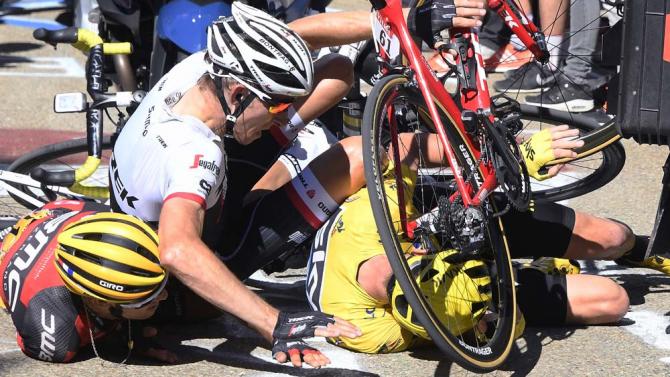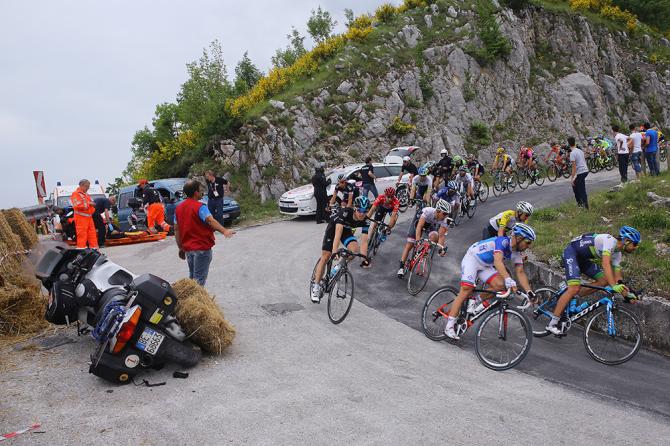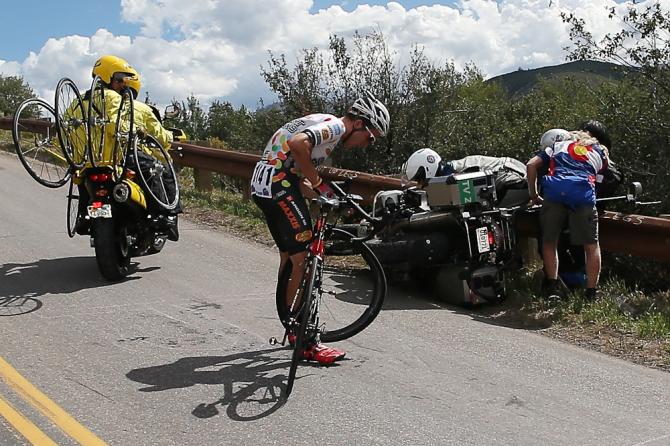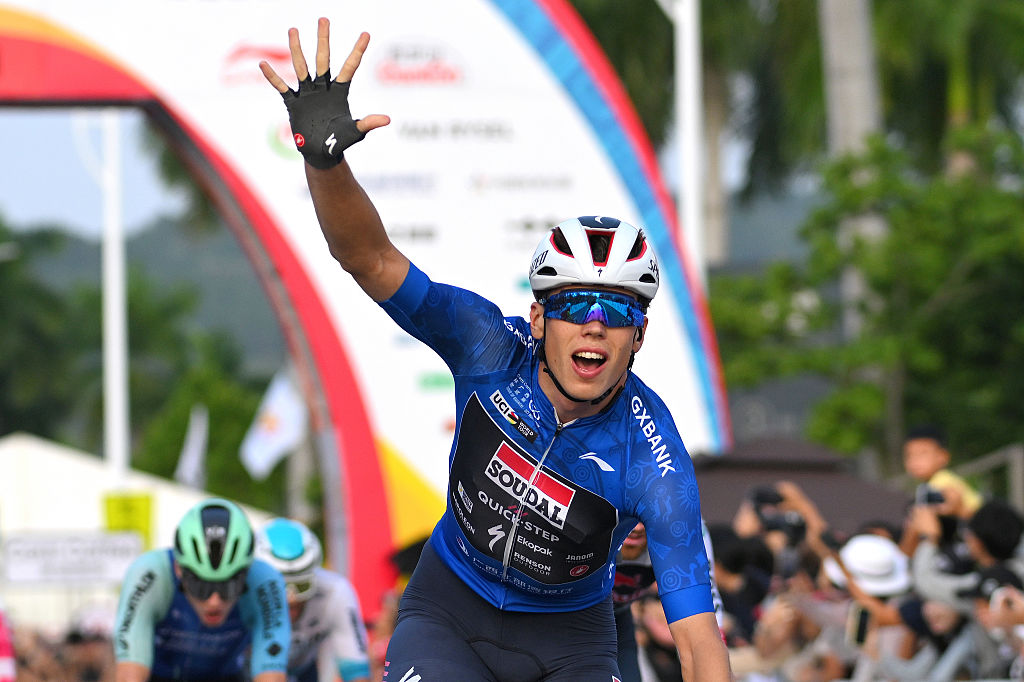Motorbikes and safety: What has changed since the death of Antoine Demoitié?
Riders' union pushes UCI to take control of safety issues
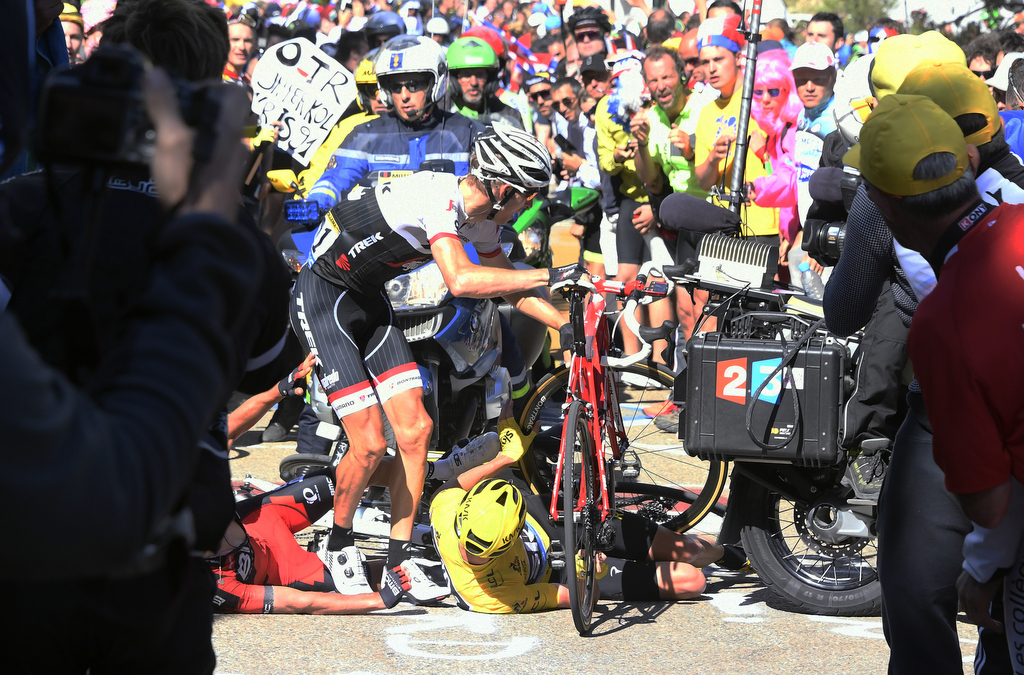
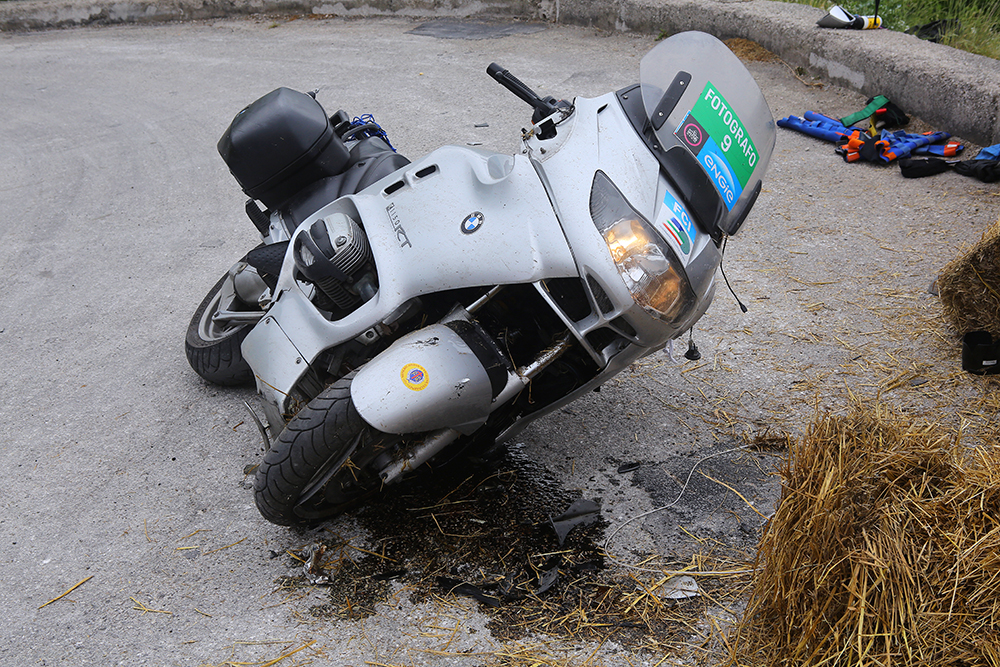
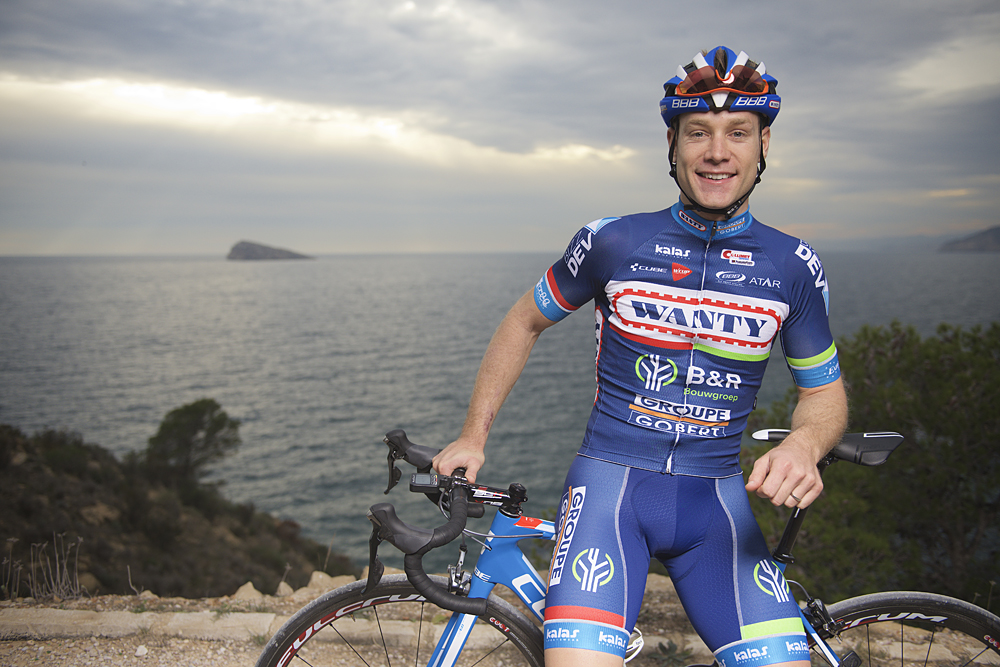
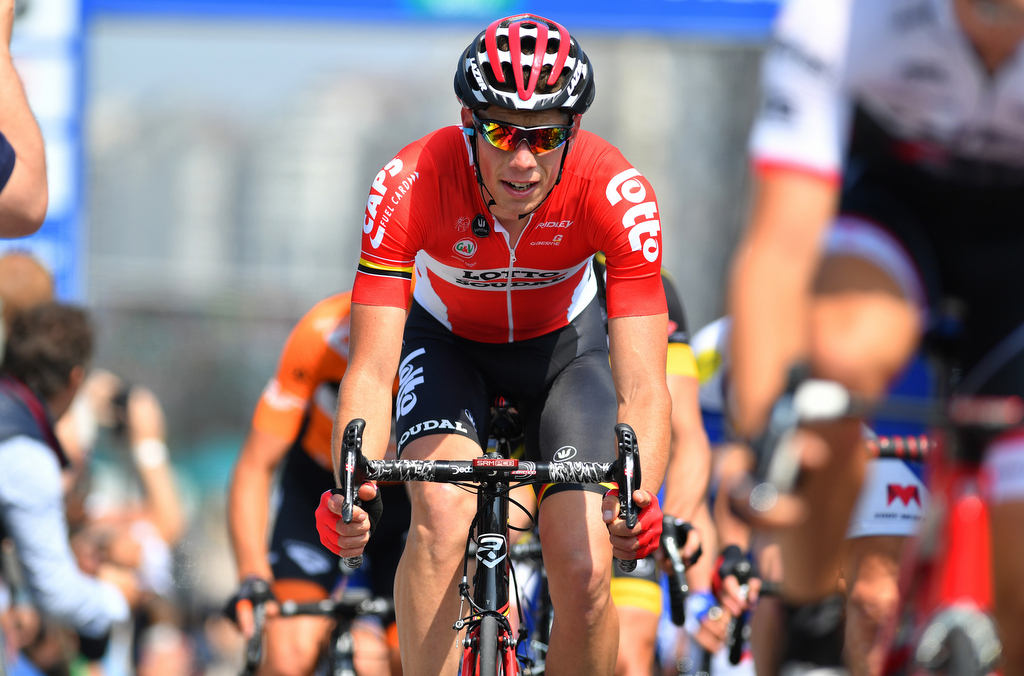
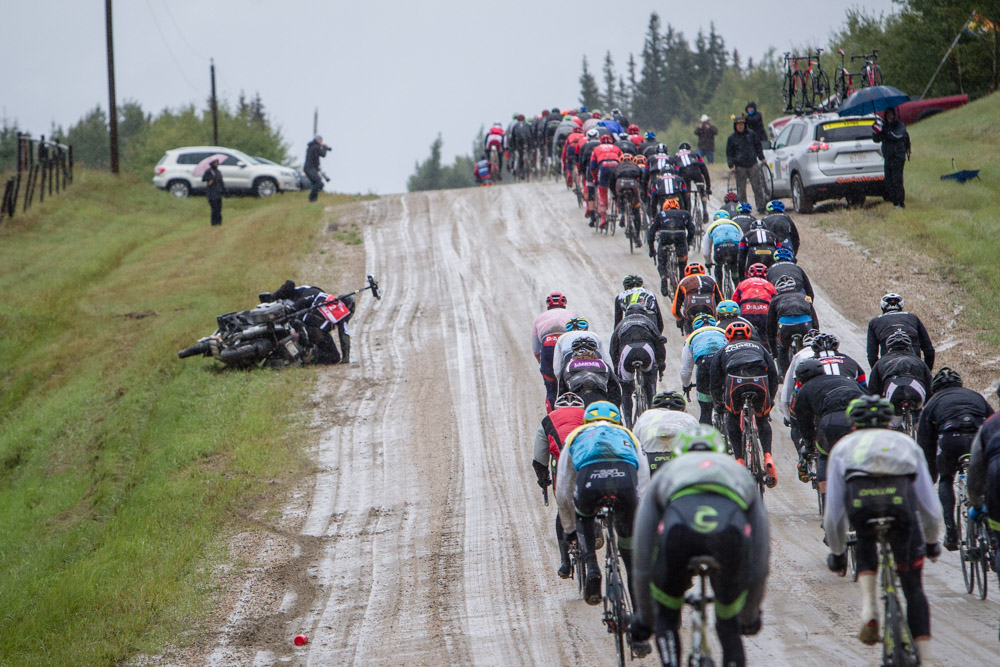
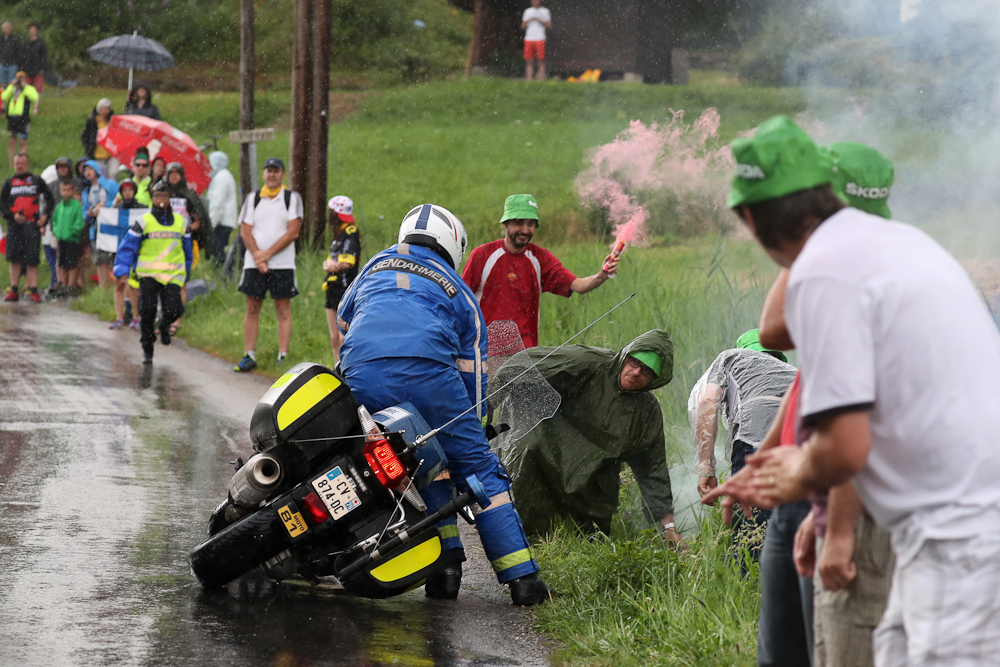
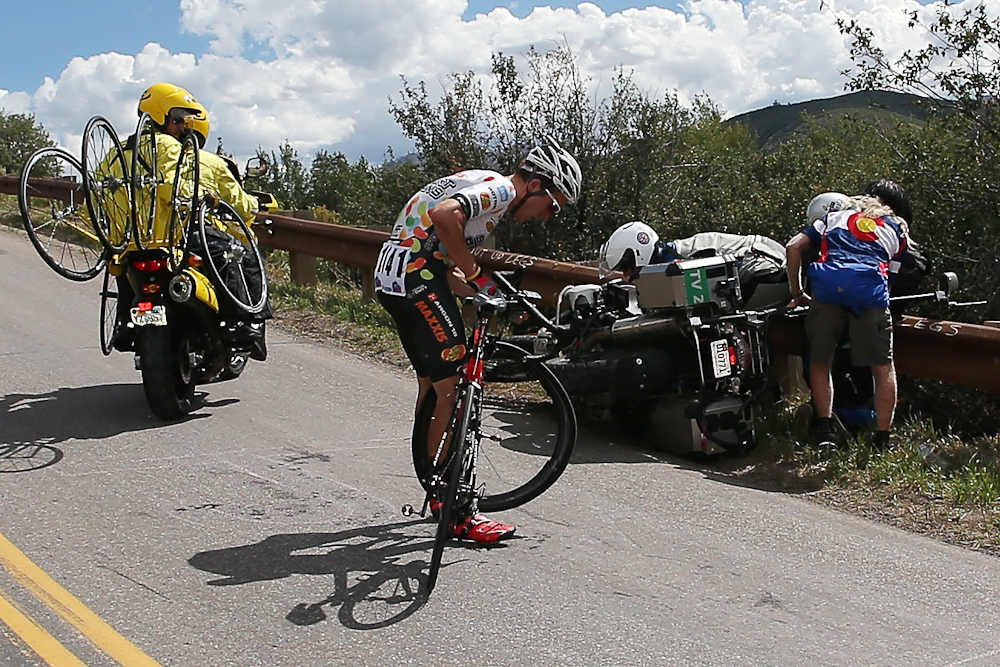
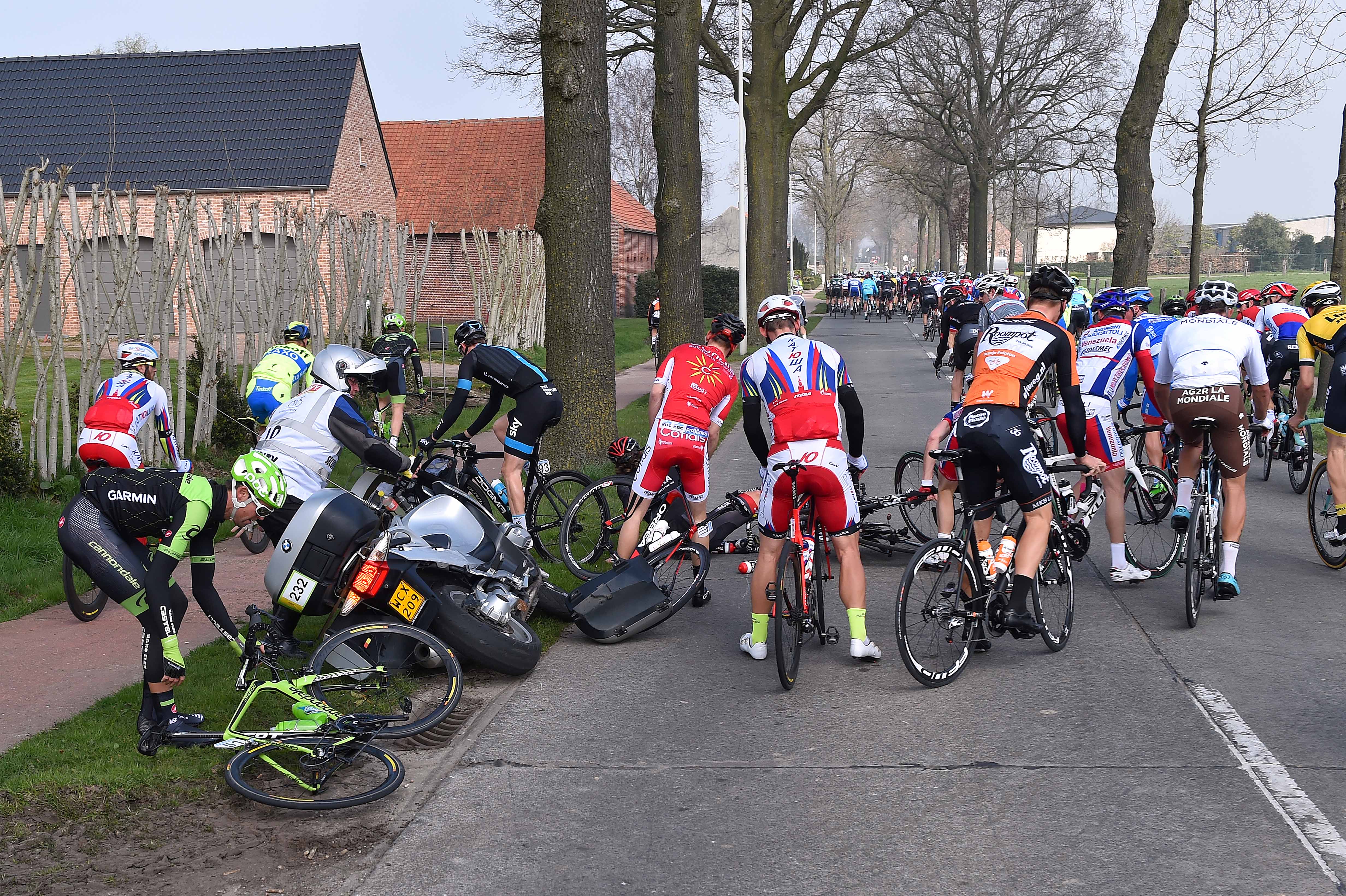
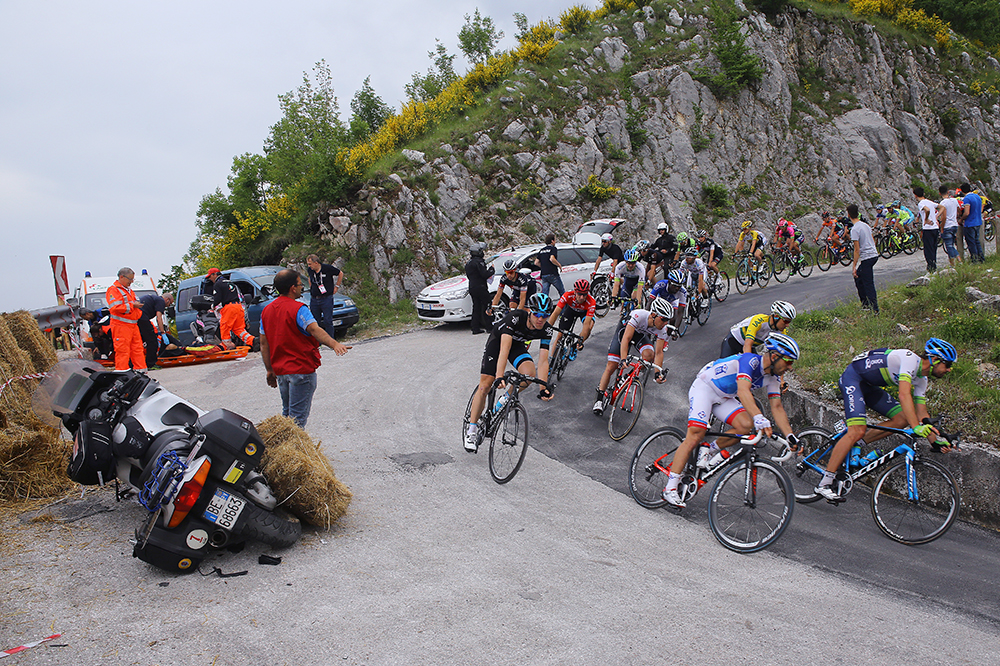
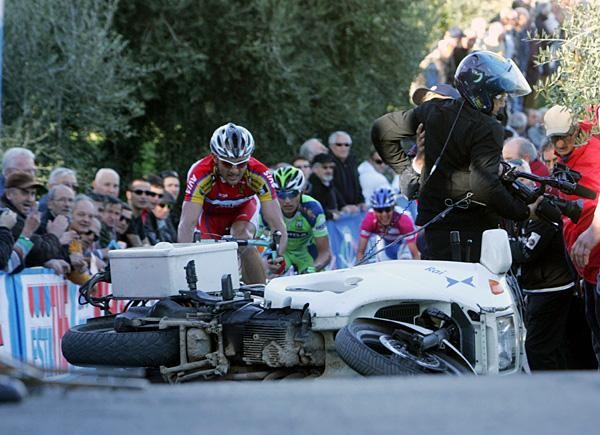
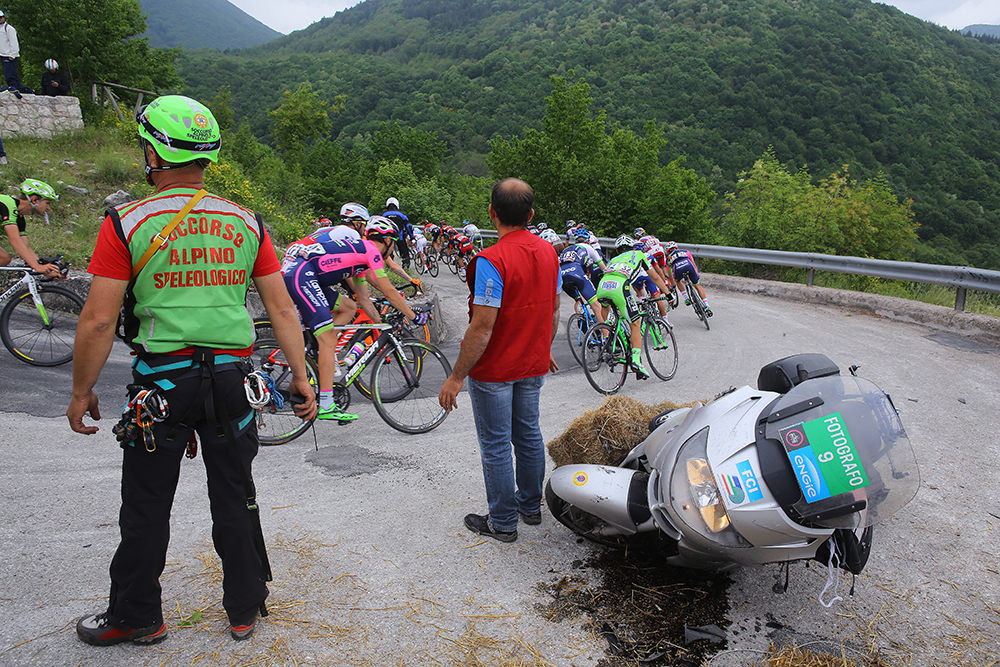
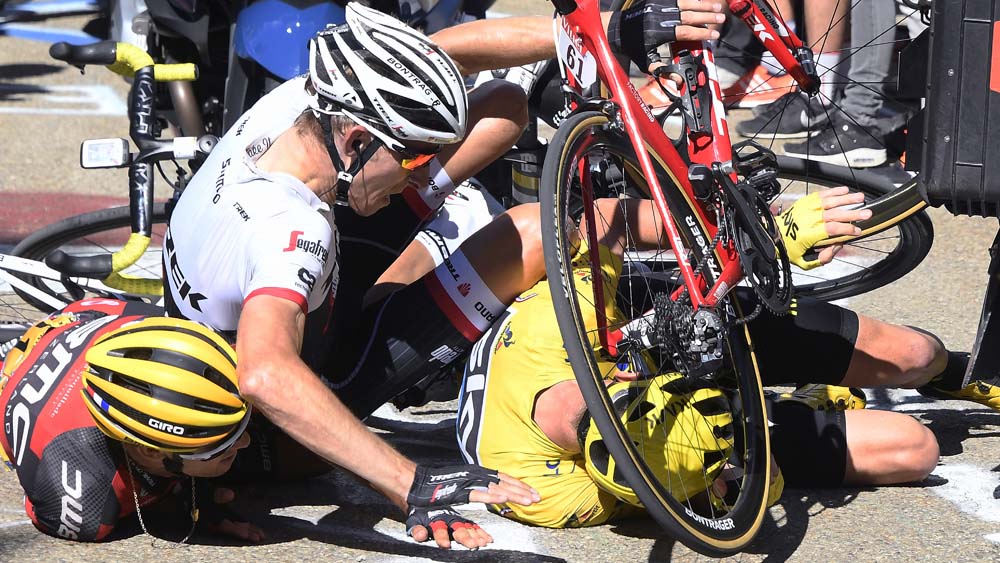
Incidents involving vehicles and cyclists during a race are nothing new to professional cycling. When mixing machine with manpower, there is always a chance that something will go wrong. However, there has been a flurry of such crashes in recent years, culminating in the horrible accidents involving Antoine Demoitié at Gent-Wevelgem and Stig Broeckx at the Belgium Tour last year.
Antoine Demoitié dies following Gent-Wevelgem crash
CPA calls for improved safety standards following death of Demoitie
Kristoff: Motorbikes should take off-course detours to improve rider safety
Belgium Tour stage 3 abandoned after motorbikes cause big crash
Heistse Pijl employs traffic light-style system for motos to increase safety
Riders overwhelmingly support CPA safety plan
Eneco Tour earns praise for rider-safety measures
UCI to hold rider safety discussions at Il Lombardia
Moolman-Pasio out for three months after collision with race motorbike
Following a long battle, Broeckx has officially come out of a coma, but it is unlikely that he will be able to race again. Tragically Demoitié succumbed to his injuries soon after the accident. Seeing one of their comrades taken down at such a young age, and in such a manner, sent ripples of fear and anger through the peloton.
"It changes the mood in the peloton," Dimension Data’s Nathan Haas tells Cyclingnews. "We’ve become more sensitive to the dangers because it hits home, and we see the reality of someone leaving the bus, and after the race, his stuff is still on the bus, but he doesn’t make it back - no one in cycling wants that to be a reality."
"For sure we are more scared," says Manuel Quinziato (BMC Racing). "If we have a car or a motorbike close to us we are more nervous but, the way we race our bikes, the problem is not really in our hands."
The discussion has continued throughout the past year about what, if anything, has changed since that tragic day in March. How did we get here and what needs to be done?
Broeckx’s crash came two months after Demoitié’s, Elia Viviani was hit during Paris-Roubaix two weeks later, Marco Marcato, who rode for Wanty-Groupe Gobert in 2016, was also hit by a race motorbike in October, and who can forget the incident on Mont Ventoux at the Tour de France when the huge crowds blocked the road and Froome, Porte and Mollema were unable to avoid a motorbike?
Riders have died in the past due to in-race collisions with vehicles. In 1950, Camille Danguillaume was killed following a collision between two motorbikes during the French national championships, and, in 1987, Spanish rider Vicente Mata died when he collided with a car at the Trofeo Luis Puig.
The latest race content, interviews, features, reviews and expert buying guides, direct to your inbox!
However the reaction to Demoitié’s death has been much more forceful, and with the strengthening voice of organisations such as the Professional Cyclists Association (CPA), riders have finally been standing up for their rights and are demanding to be heard.
The riders demonstrated their power to make changes through the introduction of the Extreme Weather Protocol. However, getting that through had been an uphill battle, and making more big changes was not going to be an easy task, even with a unified voice.
Bauke Mollema, Richie Porte and Chris Froome famously collided into the back of a motorbike on Mont Ventoux.
What went wrong?
The issue of how motorbikes and cars act during races was a topic of discussion long before the 2016 Gent-Wevelgem race. A number of riders have been involved in incidents with race vehicles in recent years, including, but not exclusively, Peter Sagan, Greg Van Avermaet and Jesse Sergent, who retired in the middle of last year in part as a result of his injuries. Broeckx had also been struck by a motorbike prior to the Belgium Tour, at Kuurne-Brussels-Kuurne.
At the time of Demoitié’s accident, the management and safety regulations surrounding the race caravan were left largely up to the organisers. That’s not to say that it was a free for all: Before each race, all involved are reminded about the regulations during the safety briefing. All motorbikes must have permission from the commissaire and the regulator, who is employed by the race, to pass the peloton.
"They are all briefed by the organisers. As organiser you have to brief every driver before the race about the different systems, and what the rules are," says Tour of Flanders director Wim Van Herreweghe.
"First you have to consider how things are before the race, if it is good or bad weather, if there needs to be more of a distance from the riders. Secondly, you need to have the general rules. At the Tour of Flanders you have rules for everything. You have different ones for the security bikes, the radio tour operators, the photographers, the television commentator or the TV camera bikes. Everyone gets from me a separate order.”
Experience is often cited as an issue, but the driver involved in the collision with Demoitié had 20 years of experience, and the driver who hit Sergent was a former police officer who had previous experience in races. Something was going wrong, though, and incidents between vehicles and riders seemed to be on the rise.
Quinziato, who rode the 2016 Gent-Wevelgem, has his own theory. "The last two years there have been too many vehicles," he tells Cyclingnews. “I don’t know the numbers, but you see that there are more and more vehicles now."
"The average level of the peloton is going up. There’s no race where you’re going easy. There’s no bike rider that comes to a bike race without being fit and ready to perform, so this makes the level much higher. When you have more guys with the legs to be in the front, for sure there’s more stress to be in the front and maybe there are more crashes. Maybe there is less space for the vehicles to pass us because there are more guys able to be up there and the roads are quite small."
Motorbikes and cars are a necessary part of bike racing, and without them it would be almost impossible to run a race. Police are needed to ensure roads remain closed and that non-race vehicles can get on the course. Races also need medical staff, neutral service, commissaires, and the race director must also travel with the race as do the teams. Media is a necessary part to ensure sponsors continue to be attracted to the sport.
Having sat in a few race vehicles during my time as a cycling journalist, the work that the motorbike pilots and drivers do under immense pressure is incredible. To err is human, and it is inevitable that mistakes will be made, no matter how skilled an individual is. Some drivers may break the rules, but the issue is eliminating the situations where these mistakes can be made.
Following the recent accidents, there were calls on social media to drastically cut the number of media and photographers' bikes, but even that is not straightforward. As UCI commissaire and Belgian Cycling Federation management member Philippe Marin explains, it’s not about the quantity but the management of them.
"It’s a very difficult one, to reduce to the motorbikes," he says. "I refer to the meeting in June [where the Belgian Federation sat down with professional riders], where the riders said that it’s not about the number of motorbikes. It’s about the way that they behave and the way that we manage the traffic within the race bubble that moves from A to B."
In their security plan submitted to the UCI, the CPA also states that the reduction in vehicles could actually do the opposite of what it intended and make the races less safe.
For better or worse, motorised vehicles have become an integral part of the race caravan.
What has changed?
Following Demoitié’s death and not long before Broeckx’s crash, the UCI made a few amendments to its regulations on ‘circulation during a race’, which threatened fines of up to 10,000 CHF should any rules be broken, but it did little to tackle the root of the issue. The CPA pushed the governing body to make changes, but they accept that it will be a long road.
"Every change requires a process of discussion and approval, and change of regulations which makes things more complicated," explains CPA president and former rider Gianni Bugno. "Since the death of Demoitié we wanted to see many things change, and instead we are still discussing the rules on security. This makes me sad, and it has also caused some of my conflicts with a few UCI managers, but I understand that we cannot act quickly in complex organizations involving so many people and parts such as bicycle races."
Some organisers and federations took things into their own hands, and over the summer the Belgian Federation sat down with riders to try and establish the major problems and potential fixes. In Belgium, they were able to quickly make changes at a national level, reducing the number of riders, cutting the number of motorbikes and making plans to ban vehicles altogether from races for riders under 16.
At an elite level, there was also a small number of changes. In June, Belgian race Heistse Pijl trialled a traffic light-style system, where good and bad places to pass were indicated by green and red dots. The Vuelta a Burgos took it a step further in August by forcing all vehicles to take planned diversions, or what has been called ‘ways in and ways out’, in order to pass the peloton.
The Eneco Tour also adopted this approach a month later, although it was technically harder to achieve with the large amount of road furniture that litters the road in Belgium and the Netherlands. The changes made for a much more pleasant atmosphere, says Quinziato, who also relayed his own close call with a motorbike earlier in the season.
"At the Eneco Tour they did a really good job. I really had the impression that there were no motorbikes around us," says Quinziato. "I understand that the motorbikes have to do their jobs, but the safety of the riders should be in first place. I crashed in the Arenberg Forrest during Paris-Roubaix, and the motorbike hit Elia Viviani. Well, Viviani crashed just seven metres from me so the motorbike was sliding along the road beside me. If it had been on the other side of the road the motorbike would have hit me really hard."
Later, at the World Championships, the UCI tackled the issue of the machine itself and used much less bulky bikes without panniers, while the circuit nature of most of the courses helped reduce the number of vehicles required.
Serghei Tvetcov checks his bike after colliding with a moto during the 2014 USA Pro Challenge.
What needs to be done?
The answer to that particular question is a lot, but there are plans in motion for the season ahead. At the end of November, the CPA sat down with the UCI in a meeting of the Safety and Technical regulation working group. The CPA, which represents the riders, presented the UCI with a comprehensive list of requests, the overarching theme of which was that the UCI should take the responsibility away from the organisers to ensure a blanket set of rules adhered to by all.
The CPA put forward 10 points specifically on the issue of ‘race caravan safety’. The first surrounded the idea of the certification and education of motorbike riders and car drivers. In their plan, all of those at the controls of a vehicle must study the course prior to each race so that they are aware of where the best and worst spots for passing are.
Under the first point, they also suggest that a ‘fixed team of motorbike operators’ work across the entire WorldTour calendar. They will be charged with maintaining a manual for circulation during a race, which will be followed by all in the remaining races on the calendar.
Adding tiers of certification has also been put forward as an idea, allowing vehicle drivers and motorbike riders to earn higher levels of certification depending on their experience and conduct. Any ‘poor performances’ could see riders and drivers demoted. Although not in the CPA document, fines have also been suggested as a punishment.
"It’s a matter of awareness,” says Quinziato. "The vehicles at a bike race have to be aware of the risk that they pose and the consequences of what they do."
This ties into the CPA’s next point, which involves tracking the behaviour of individuals. This would require all drivers in the race caravan to wear a number visible on their person, which would then allow people to identify individuals and report them for dangerous driving. A system of reporting, the CPA document says, would also help engage riders and others involved in the races in actively solving any problems.
Next, the CPA suggests a speed limit, something that is not currently used, while passing the peloton. When within five metres of a rider, it says, a car or motorbike should not go more than 10kph quicker than the current speed of the peloton. Point four states, "Wherever possible, motorbikes should use off-course roads to pass the peloton."
This particular point is one that Flanders director Van Herreweghe is keen to push. "Passing the peloton is always a risk. Whether we have 10 or 20 security motorbikes, that’s not important, the motorbikes shouldn’t have to pass the peloton," he says.
Points five and six both look at the size of the peloton and the size of the caravan, which the CPA says shouldn’t be reduced. With relation to the size of the peloton, it believes a proper study should be done prior to making any changes to the number of riders per team. Regulators should be placed at the front and the back of the peloton to indicate when it is safe to pass, it says, lighter bikes are needed throughout, passing should be banned on any descent and no motorbikes or vehicles should be allowed near riders in the final 10 kilometres of a race.
The document also puts forward a suggestion that the secondary team car should be placed in front of the peloton until a breakaway is formed. Once the break comes together, the cars will pull over to the side of the road and those who have representation will move in behind the break while the remainder will wait until the peloton passes before continuing.
Separate to the CPA and UCI, Flanders Classics, which runs Gent-Wevelgem and the Tour of Flanders, among others, has made a few of its own plans. This will involve increasing the number of regulators to four, all of whom will have a deep knowledge of the course. Vehicles will only be able to pass when they have permission from both a commissaire and a regulator.
The UCI plans to bring in a Race Convoy Guide for this season, although that is currently still in production.
The other issue is the management of fans on the side of the road. We saw what can go wrong when a big race convoy met too many hyped-up fans at the Tour de France in 2016. Tackling the behaviour of fans is challenging with so many open roads. This is still largely down to the organisers too. More barriers can help, as can heavier policing and steward presence, but education is also a must.
It shouldn’t have needed the death of a rider to hurry things along, but it showed that safety in races is a pressing issue that needs addressing as soon as possible.
Van Herreweghe puts it best when he says, "It only works when we don’t have any crashes."
Born in Ireland to a cycling family and later moved to the Isle of Man, so there was no surprise when I got into the sport. Studied sports journalism at university before going on to do a Masters in sports broadcast. After university I spent three months interning at Eurosport, where I covered the Tour de France. In 2012 I started at Procycling Magazine, before becoming the deputy editor of Procycling Week. I then joined Cyclingnews, in December 2013.
